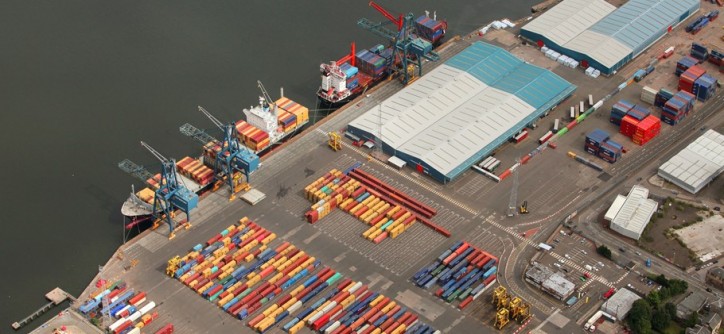Peel Ports’ £400 million Liverpool2 investment to boost Scotland’s deepest container terminal
Scotland’s deepest container terminal expects to double its business in the next five years thanks to the opening of £400m ‘sister’ terminal – Liverpool2.
Owned by Peel Ports, Greenock Ocean Terminal - recognised across the world for its role in exporting goods including Scotch whisky and Scottish food stuffs – has projected that it will handle 200,000 TEU (twenty-foot equivalent units) containers a year by 2021, representing a 100% increase on today’s 100,000 units.

Image courtesy of PeelPorts
Andrew Hemphill, Port Director, Peel Ports’ Clydeport explains: “The opening of Liverpool2 has transformed the playing field for us, bringing deep-sea connections much closer to Scotland and we are now in a unique position thanks to our Irish Sea Hubs. Mega ocean container ships can now call directly into Liverpool, which acts as a feeder hub to us in Greenock, Ireland and Manchester, allowing closer import and export routes to market.
“It is a more commercially viable, sustainable way to move goods around by sea. Our connections will take traffic off of Britain’s already busy motorways and offer a cheaper more environmentally responsible method of transportation.
“Once news spreads about our new capabilities I expect shipping lines will see our Irish Sea Hub as an attractive alternative to the status quo.”
The destinations of the containers that already come through the port vary, with many making their way to various whisky bonds along the Scottish West Coast to be loaded and brought back to Greenock for shipment to the Americas.
Located on the Firth of Clyde, Greenock Ocean Terminal has been at the heart of Scotland’s shipping industry since 1876, with the container terminal officially opening in 1969. The 50-acre facility has evolved over time and recently invested £1.6m in straddle carrier to improve operations for its global customer base, with further investment planned.
Andrew recently recruited a new sales manager who will spearhead Clydeport’s sales strategy as the business embarks on meeting its five-year growth targets.
Gillian Johnson officially joined the company in January 2017, bringing with her 25 years’ industry experience. Also the current chair of the Glasgow Freight Club, Gillian plans to challenge historic assumptions and encourage customers to take a good look at their existing supply chains to uncover time and cost savings.
Future plans include extending the quayside by 150 metres to support larger vessels coming into Greenock. The site is also home to three iconic cranes that have become a key focal point in the Firth of Clyde’s skyline which have the ability to lift loads of up to 40 tonnes and outreach across 13 containers.
Another of the Port’s key selling points for cargo owners is that it has 25,000m2 of modern multiuser warehousing and up to 80 reefer (refrigerated container) points.
Many of the Port’s customers use the facility to store imported and exported commodities as well as goods that have been unstuffed, in preparation for onward distribution.
Andrew adds: “All of these key investments give us the confidence to project such a bright future for Scotland’s export capabilities. It’s a very exciting time for us.”
For more information on services from Greenock please click HERE.
Key facts and figures:
- Greenock Ocean Terminal contributes £9.7m to the local Greenock economy from the growing cruise passengers
- Berths 372m of quayside
- Two shore side container cranes 32t (32m reach across)
- One shore side container crane 40t (32m reach across)
- 10 straddle carriers
- Two empty container stackers
- Variety of forklifts from 1-14t
- Feeder services that connects with Southampton, Liverpool, Belfast, Dublin, Irlam, Bilbao, Leharv, Antwerp and Rotterdam
- 25,000m2 of modern warehousing
- 6m unrestricted draft
- Quayside berthage of 372m
- 11 straddle carriers
- Over 80 reefer points with plans to increase to 100+.
- M&R repair facilities on site
- Container weighing
Source: Peel Ports